With a bit of viral lockdown time on my hands, I transcribed and translated the first two chapters of the Swedish book on Gösta Caroli. These chapters were most interesting to me for the information it had on Caroli’s time in Canada during the 1920s. In late 2018, I had written a blog about Caroli’s silver fox farming adventures in the Nicola Valley (British Columbia). I wanted to see what authors Olsson and Jonason had to add to what I had already discovered…
N.B. – See my blog on The Après Espionage Career of Gosta Caroli for the last chapter of this book
Once again, I have relied on Google Translate and the translation is a bit rough in areas, but I think the overall gist is accurate. I am not including the Swedish transcript in the interests of brevity. I’ve also added some comments in italicized square brackets. I have also added a few extra paragraph breaks as the originals were a bit long. Have also added source notes for the book’s footnotes.
The Priest’s Son from Norra Vram
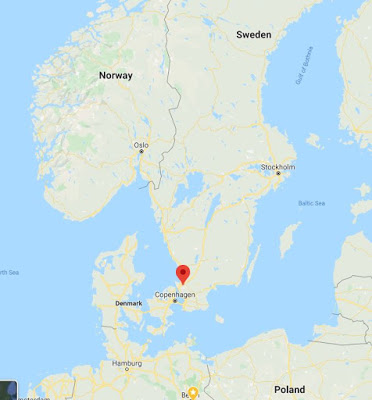
The crofter Carl Johan Carlsson in Fellingsbro was probably a very proud father when his son Claes, as a 24-year-old in 1886, began his university studies in Uppsala. Claes came from a poor home and the studies were far from a matter of course, rather it was a big exception. But he had a reading head, the priest in Fellingsbro even noted in the house interviews that his reading from the catechesis was “very good” and it was probably with his help that he got the support he needed to start his studies. The chance he was given would give Claes a life that was far from the crofters life in Fellingsbro, after studying and working as a teacher for a couple of years, in 1894 he was given the position of preacher at the Michael’s Chapel in Uppsala. As was normal, the surname Carlsson was also replaced by the more Latin Caroli, which has since been carried by the family [This is fascinating. I had always wondered why Gösta had such an Italian sounding last name.]. His career continued in the church, first as assistant pastor in 1896 and then as cathedral coordinator in 1899, both positions in Uppsala. He moved to the small Scanian [Scania is a province in southern Sweden] agricultural community Norra Vram in 1901 when he was appointed pastor of the parish. He brought his family with him to the parish, wife Anna Berg, daughter of curate Johan August Berg in Tärby [north of Norra Vram], and the children Ingrid, Gunnar and Gerda, all born in Uppsala [1896, 1898, 1900].
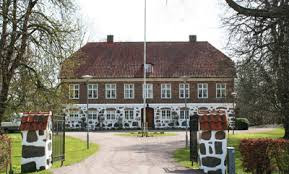
The vicarage in Norra Vram is still today a magnificent stone building on two floors, when it was built in 1816 it was described as the parish’s “second finest house”. The finest house belonged to the person who financed the construction of the parsonage, the castle master at Vrams Gunnarstorp Castle, court marshal Georg Filip Berch. By the time Claes Caroli and his family moved into the parsonage, it had already been inhabited by a number of church pastors, among them was Gustav Henrik Mellin (1803-1876), who had moved from Finland when it was conquered by Russia in 1809, and who had read to the pastor and became a well-known author before he, in 1852, was appointed pastor of the church in Norra Vram. As church pastor, Claes Caroli was a respected and esteemed man in the parish, he spent time with the castle master and the parliamentarian Gustaf Tornérhjelm at Vrams Gunnarstorp’s castle and with all the big farmers of the area. Now and then he was visited by “fine gentlemen” from the parish; politicians, churchgoers and old acquaintances from the Uppsala era.
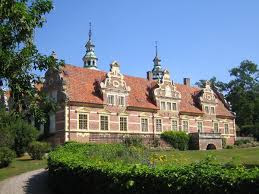
In this environment, on November 6, 1902, Claes and Anna’s fourth child, the son Gösta Caroli, was born. Unlike his father, in Norra Vram Gösta would have a favorable childhood. The father could afford to ensure that his children received the best education and that they met and socialized with “the right people”. The daughter Ingrid would later marry the pastor Axel Abring, the son Gunnar would take over the father’s service as church pastor in Norra Vram and the daughter Gerda would, like Ingrid, marry a pastor, Rudolf Hoffman of Rickling between Kiel and Hamburg. The youngest son, Tryggve born in 1906, would go off the church path and instead become a successful architect. [Claes Tryggve Caroli married Anna Josefina Margarete Greta Cedarblom a pharmacist. Tryggve passed away in 1968.]
Son Gösta’s education began after a few years of home schooling at Åstorp’s mixed school and then continued for two years at Lund’s private elementary school, a schooling granted to few in Norra Vram. Just like his father, Gösta was a good student, which was also evident in the grades, not least regarding the language subjects. Gösta was even allowed to travel to British Essex to study for a year at college, which was very unusual at this time. The childhood friend Runo Löwenmo [a botanist and author], who had the surname Andersson at the time, later wrote that “the school’s language teaching at that time was a perpetual chewing of grammar. Natural spoken language was never heard. Gösta, on the other hand, was a language genius with a big A in German, English and French”. [1 – Skånska Akademien] According to Löwenmo, Gösta wanted to become a diplomat, “my father had an acquaintance who was an ambassador and that was something very nice.” [2 – Skånska Akademien]
Gösta’s future prospects would have been very good if it had not been for a tragic handicap that got in the way his studies. At a young age he had contracted scarlet fever, which in itself was not unusual nor a serious illness. [3 – PRO Kew KV 2/60] More serious was that during his recovery, he suffered acute rheumatic fever as a result of the streptococcal infection moving from his throat and causing inflammation of the heart muscle and swelling of the joints, which would affect him his entire life. Due to his rheumatism, Gösta had to finish his studies [4 – Obituary/In Memoriam] at Lund’s private elementary school and according to the doctor’s prescription the remedy was “hard work”. [5 – pers comm. Caroli’s nephew] Instead, the studies continued in agriculture and for two years, 1922-1924 [6 – Letter from Caroli to Müntzing 1950], he was an agricultural student on two different farms in northwestern Scania, partly at the family Tornérhjelm Vrams Gunnarstorp and partly at the Kinch Bälteberga farm. Runo Löwenmo describes Gösta during this time as a role model, a person he looked up to. Together with Gustaf Tornérhjelm, grandson of the previously mentioned Gustaf Tonérhjelm and the intended heir to Vrams Gunnarstorp, Gösta was invited to Runo’s home in Höör [about 30 km southeast of Norra Vram]. There the three young men, who were all interested in nature, roamed the forests at Jularp. Gösta was well-liked in Runo’s family and he describes him as “relatively neatly built, dark-haired and wearing glasses. The friendliness radiated perfectly from him. ” [7 – Skånska Akademien]
In the same way, Gustaf Tornérhjelm invited both Gösta and Runo home to Vrams Gunnarstorp’s castle, including the many hunts that happened annually. On these hunts were hares, cocks, foxes and deer, but Gösta himself did not participate in the hunt, instead he entertained the many foreign guests who came to participate. The fact that several of these guests came from Germany is not surprising, the traditional relations between Sweden and Germany were deeply rooted and went far back in time. It is therefore no wonder that Caroli was influenced by this German friendliness, especially when he himself had a sister in Germany. However, Caroli and Tornérhjelm did not only meet during the annual hunts, the distance between Norra Vram’s vicarage and Vrams Gunnarstorp castle was only about 1.7 kilometers and Caroli was especially pleased with Tornérhjelm’s motorcycle which he was more than happy to borrow. [8 – pers comm. with Caroli’s nephew]
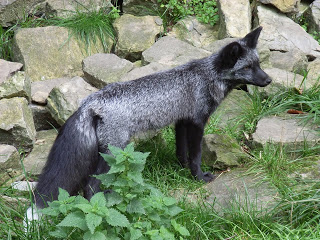
Among Silver Foxes in Canada and the Great Lakes
[Given that Caroli spent no time on the Great Lakes, other than passing through on a train, this chapter title is a bit misleading.]
In the mid-1920s, the young Caroli came to emigrate to Canada and enter a successful industry – breeding silver foxes. Throughout the first half of the 20th century, the silver fox fur was a status symbol that demanded a high price, something that would be broken only in the late 1940s when overproduction made the fur an everyday product with falling prices as a result. However, the silver fox does not appear in the wild, it is instead a bred variant of Vulpes vulpes, the red fox, but with a black furry pelt with silvery spiky hair and a white tail tip. The wild red fox is widespread throughout Europe, North America, Asia and to some extent also in northern Africa and Australia.
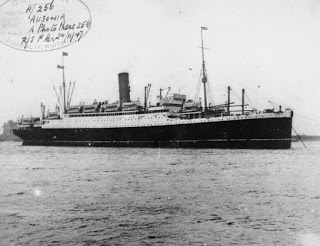
However, Gösta Caroli was not the only one in Sweden who invested his money in breeding silver foxes in the 1920s. The largest Swedish farm was founded in the 1920s by the three brothers Welander in Danstorp’s village in Blekinge [southern province east of Scania] and farms arose simultaneously in, among others, Loka in Ålvdalen, Bonäs at Enköping, Vikingstad in Östergötland and Långsjöby near Storuman to name a few places. The Welander brothers in Danstorp village had acquired their knowledge of the silver foxes in North America, and Caroli would follow the same path.
In Southampton, Caroli boarded Cunard Lines RMS Ausonia on March 4, 1926, and with him he had a new passport which he had ten days earlier received in Kristianstad. [9 – Immigration record] The voyage went west and after nine days the ship arrived in Halifax on Canada’s east coast. Caroli was 23 when he landed and at the border check he stated that his destination was Edmonton in Alberta on the west coast. [Mmm… Alberta is not on the west coast… it is in the west of Canada, but not on the coast.] The train journey was long, nearly 4500 kilometres [The Swedish reads “450 mil”. Google Translate variously translates “mil” as “10 kilometres” and/or “miles”. Given the actual distance is in the range of 4800 kilometres, I’ll take “mil” to mean “10 kilometers”. So 450 mil = 450 x 10 kilometres = 4500 km.] and through three time zones. The first stage from Halifax to Montreal took 27 hours and on arrival they had passengers who were going west to change trains. After a break of just over two hours, the new train began to roll, the journey went all night and 25 hours later the passengers arrived in Winnipeg where there was a longer stop. While the carriages were being cleaned and both the locomotives and restaurant cars were filled, passengers were allowed to leave the train and stretch their legs for one hour and five minutes. It would then take another 22 hours for the train to reach its destination in Edmonton. The total travel time would then have been 82 hours and 30 minutes, at least if the timetable had been kept; bad weather, oncoming trains and even derailment were not all too common causes of delays. [10 – Alberta Railway Museum]
The journey from Edmonton went further west, more than 600 miles [We again have “60 mil” but in this instance it is likely 60 x 10 miles, as the actual distance from Edmonton to Merritt is around 900 km, about 600 miles.] to Lake View Fox Farm on Nicola Lake off Quilchena in British Columbia, a community of 60 residents mainly engaged in mining and livestock management. The farm was run by William Crompton and his partner Joseph Guichon, two experienced fur traders and mass dealers with several different businesses in the area. Every year, Crompton and Guichon hired a few seasonal workers, of whom Caroli would be one this year. [11 – BC Historical Federation] The work suited Gösta well and in addition to the breeding of silver foxes, he also experimented with irrigation devices for alfalfa (luzern) and silo corn. [Thanks to Traugott Vitz for pointing out that luzern/luzerne/lucerne is alfalfa.] [12 – Letter from Caroli to Müntzing 1950] However, he did not return home until after twenty months in Canada, instead of returning home after the end of the season, he traveled on a motorcycle around the area and crossed the Canadian Rockies, the Canadian part of the Rocky Mountains, among others. [13 – Obituary/In Memoriam] It was not until November 26, 1927, that he took out a new Swedish passport in Montreal and shortly thereafter he went home to Sweden. [This makes a bit more sense, as to why he would have received a passport in Montreal. Although Olsson and Jonason do not cover many other trips that Caroli took to North America and the United States in subsequent years. See my earlier blog.] Over Christmas and New Year he stayed at his mother’s house before in March 1928 he once again traveled to Canada, this time from Hamburg with the ship SS Thurinjia belonging to the Hamburg America Line. This time, too, his destination was Crompton’s farm in Quilchena, but the visit would be shorter, as early as June he returned to Sweden to prepare the establishment of his own farm in the upland of Storvreta.

In Sweden, he was given the opportunity to attend a wedding in Norra Vram, when father Claes performed the marriage of his sister Gerda and the priest Rudolf Hoffman from Rickling, Germany, on October 9. Here, Gösta also met Rudolf’s sister, Friedel, and their acquaintance eventually developed into a love affair and eventually an engagement. The love from Gösta to Friedel was great and came to fruition even though they were occasionally on different continents; Rudolf Hoffman would remember that at this time, Gösta had sent an elegant silver fox boa to his sister. [14 – Speech by Rudolf Hoffman at Caroli’s funeral]
When Gösta returned to Crompton in Quilchena in November of that year, it was to buy silver foxes for his own farm, twenty pairs, of which he would keep five for breeding and sell the remaining fifteen to customers in Sweden. The deal was expensive, 20,000 Canadian dollars for the foxes and a further 2000 for the trip, hotel, health inspections and permits. In British Columbia, the deal was noted by the regional magazine The Merritt Herald which on November 30 wrote that “The largest shipment of foxes ever exported from British Columbia left Merritt at 10:30am on Wednesday morning with the Canadian Pacific Train to Halifax en route to Gothenburg, Sweden. ” [15 – The Merritt Herald]
Caroli would make further trips to Canada, but the success of the silver fox farm would fail, the economy was deteriorating and according to Gösta’s family he was tricked out of money by a company. [16 – pers. comm. with Caroli’s son] In 1930, his business finally went bankrupt and according to the family, Gösta disappeared for a long time after that. When he later showed up with his parents in Norra Vram, he told him that he had snuck on board a ship as a stowaway because he didn’t have any money and when the crew found him he was half starved in the coal supply. The ship took him all the way to Africa but since he was a stowaway, he was given no opportunity to land – instead he was put to work in the kitchen and released only after returning to Sweden. [17 – Speech by Rudolf Hoffman at Caroli’s funeral]
In 1930s Europe
With his failed business as a breeder of silver foxes behind him, Caroli returned to Norra Vram. He would not, however, stay in the area for long, for many of the following years he lived a wanderlust life where he held various jobs for short periods while traveling, or rather wandering, around Europe. The bankruptcy had, beyond reasonable doubt, been a severe blow to him and this should have been decisive for his decision to leave Sweden.
The information about Caroli’s travels in Europe in the 1930s is vague and poorly documented, but Gösta himself told stories about trips to Germany, Austria, Italy, the Netherlands, Czechoslovakia, Turkey and Africa; trips that can to some extent be confirmed by preserved passport documents. According to childhood friend Runo Löwenmo, Caroli, together with Löwenmo, applied to the University of Vienna after Caroli’s father passed away in June 1933. They would study there to be lawyers, but for Caroli, despite his sharp reading head, the studies did not go well and no degree would be given, perhaps Caroli had something else in mind. However, the details of studies in Vienna are uncertain and in the university archive Caroli is not listed among enrolled students from 1930-1939. Caroli and Löwenmo came regardless of each other down in Europe and while Löwenmo continued his studies in Vienna and later in Berlin, Caroli made his way through the increasingly Nazi central Europe. For a while, in 1935, he was employed as an insurance agent for Brand- and Lifförsäkrings-AB Skåne and was then resident at Fersens väg 10a in Malmö. [18 – Swedish Royal Archives] However, working as an insurance agent was not for the restless Caroli, it was not long before he was again down in Europe. [19 – Swedish Royal Archives]
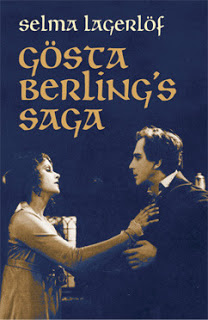
According to a story, he once, probably in 1936 [20 – PRO Kew KV 2/60], traveled from the Netherlands, through Germany, across the Brenner Pass and into Italy where he briefly worked as a gardener. [21 – Nigel West – British Sec. Serv. Operations 1909-1945] This story is supported by Gösta’s passport which shows that in November 1936 he crossed the border to Italy via Brenner and that in April the following year he left the country the same way. Gösta himself would later recall that during this time he worked at Stern’s gardens in San Remo where he was responsible for the cactus crops, a job he enjoyed well but had to leave when he lacked a work permit. [22 – Caroli’s passport and a letter from Caroli to Müntzing in 1950] According to another story, he was once arrested in Russia on suspicion of espionage and must have been released only after it was proven that he was a journalist . [23 – Northamptonshire Police] During the years he also came to some extent to provide himself as a correspondent for various Swedish newspapers, including for Sydsvenska Dagbladdet. He mainly wrote travel notes and these were signed with the pseudonym Gösta Berling [24 – Pers comm with Caroli’s son] but he never succeeded in fully supporting himself as a journalist. [Interestingly, there is an 1891 Swedish novel called “Gösta Berlings Saga” which was very well known at the time. “The hero, Gösta Berling, is a defrocked Lutheran priest who has been saved by the Mistress of Ekeby from freezing to death and thereupon becomes one of her pensioners in the manor at Ekeby. As the pensioners finally get power in their own hands, they manage the property as they themselves see fit and their lives are filled with many wild adventures. Gösta Berling is their leading spirit, the poet, the charming personality among a band of revellers. Before the story ends, Gösta Berling is redeemed, and even the old Mistress of Ekeby is permitted to come to her old home to die.” Interesting choice of pseudonym.]
The life he lived was tiring and troubled, in Prague he suffered from jaundice and therefore went to Karlsbad (today Karlovy Vary) spa town where, according to his own statement, he cured himself with the health-giving water of the village. A British report a few years later found that Caroli considered it impossible during this time to find a regular job and settle down. He sought a job that gave him the opportunity to study further at university, his background as a farmer would not give him any opportunity for the career he was pursuing and the situation worsened for each passing year. [25 – PRO Kew KV 2/60] With a background in a priestly family and an environment where a title was necessary for acceptance, this endeavour is not unreasonable. He would later recall that he constantly wanted to return to Canada and create a new life there, but lack of money, an unhappy love story and then a war would put a stop to these plans.
Conclusion
These two chapters have filled in a little bit of information about Gösta Caroli and his early life. I have been flipping through the other chapters of Olsson and Jonason’s book, looking at the footnote sources to decide if they are worthy of transcription and translation. Most of the remainder of the book relies on the PRO files at Kew and/or published English books. Exceptions are noted below…
Värvad till Abwehr – Referred to Abwehr – this section has some Swedish references
Abwehr – Abwehr – relies mostly on published sources or Kew
Nicolaus Ritter – Nicolaus Ritter
Snows – SNOW
Snows fall – SNOWs Fall
My Eriksson – My Eriksson
Agent i ett Fredstida Storbritannien – Agent in Peacetime Great Britain – this chapter looks interesting – relies on Northamptonshire Police archives and Swedish Royal Archives
Den andra resan – The Second Trip
Nya uppdrag – New Missions
S/S Mertainen – SS Mertainen – Swedish sources but seems to focus on the wreck of the SS Mertainen with very little mention of Caroli
Malmtrafiken – Ore Traffic
Från Narvik – From Narvik
Tyskt flyg angriper – German Air Strikes
Fartygets forsatta öde – The Fate of the Ship
Kristiansund bombas – Bombing of Kristiansund [Norway]
Operation Sjölejon – Operation Sealion – published sources
Operation förbereds – Preparation of Operation
Slaget om Storbritannien – Battle of Britain
Invasionsplanerna avbryts – Invasion Plans Cancelled
Hade invasionen varit mölig? – Had the Invasion been Fun?
Operation Lena – Operation Lena – published sources
Agenter – Agents
Konklusioner – Conclusions
Vardagsliv i Storbritannien – Everyday Life in Great Britain – published sources
Blitzen – The Blitz
Förberedelser i Tyskland – Preparations in Germany – mostly published sources – the first section has some Swedish sources
Gösta Utbildas – Gösta’s Training
Ritters medarbetare samlas – Ritter’s Employees Gather
I ett ockuperat Paris – In Occupied Paris
Det första försöket – The First Attempt
Operationen genomförs – Operation Carried Out
Landning i Storbritannien – Landing in Great Britain – British archives or published sources
Arresterad – Arrested
Camp 020 – Camp 020 – published sources
Camp 020, Latchmere House – Camp 020, Latchmere House
“Tin-Eye” Stephens – “Tin-Eye” Stephens
Förhör – Interrogation
London Reception Centre – London Reception Centre
London Cage – London Cage
Dubbelagenten Gösta – Double Agent Gösta – published sources and British archives
Camp 020 – Camp 020
Tyskarnas bild av Caroli – German Image of Caroli
Flyktförsök – Attempted Escape
Efterspel – Epilogue
Tate – TATE – published sources
“Tate” i arbete – “TATE” at Work
Double-Cross organisationen – Double Agent organization – published sources
Målsättning – Aims
Viktiga principer – Important Principles
Resultat – Results
Åter i Sverige – Back in Sweden – see my earlier blog on this chapter
